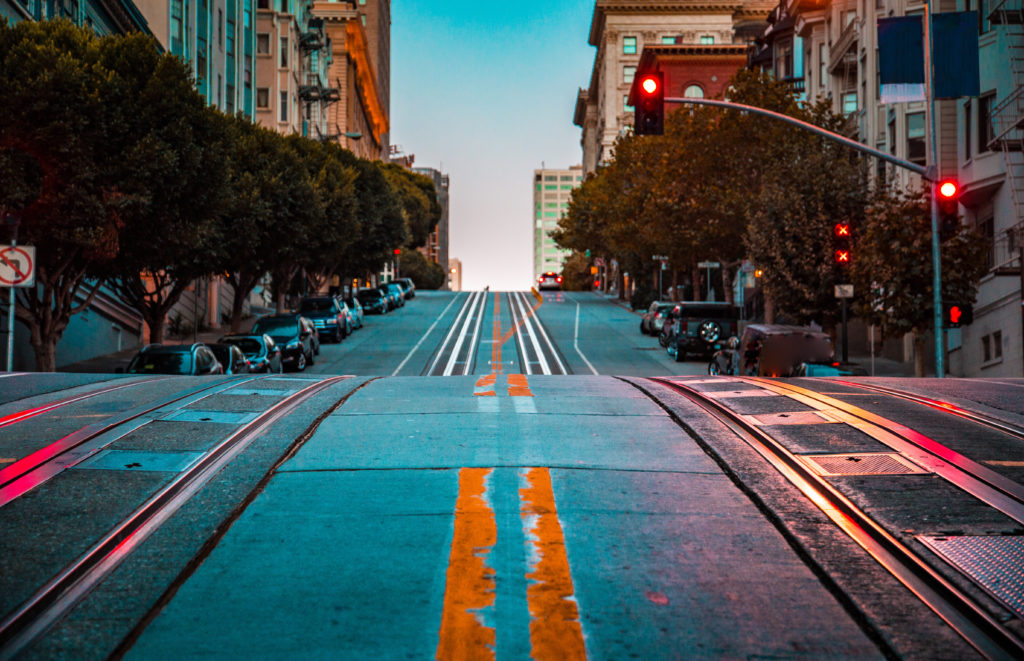By Mark Slater and Junyong Huang-Stowers
We hope everyone reading this is healthy, safe and following the guidelines for prudent behavior during this difficult time.

Hollywood raised it years ago in The Andromeda Strain, Outbreak, and more recently in Contagion. There have been significant viral infections in past years, like SARS and H1N1. The Naval War College conducted a pandemic exercise in 2019. Now it is here, but neither as a movie nor an exercise. As of this writing, the human toll is bad, and future trends unknown.
Efforts to stem, or at least manage, the spread of COVID-19 in California came first with a series of Bay Area shelter-in-place orders, “lockdowns,” that spread through California cities and counties until finally superseded by Governor Newsom’s directive shutting down the entire state and most businesses until at least May 3. Other states soon followed. The economic cost is no less real than the human toll.
Many businesses pay premiums for insurance that covers loss of net income—profit—from interruption. This business interruption insurance is typically part of a first-party property policy. There is no question that virtually all businesses have been interrupted. But what coverage might be found for the real losses, and what coverage exceptions might apply?
The essential, triggering event for business interruption coverage is “physical damage;” without it, there is no basis for coverage. However, the physical damage can be to the policyholder’s property, or, if the policyholder has contingent business interruption coverage, damage to a customer or supplier across the supply chain. That “contingent” loss can harm a business just as badly as anything done directly to the policyholder. Actions by a civil authority, like closures, prompted by nearby physical damage (within a few miles, usually) are also typically covered.
What about COVID-19? No evidence indicates it damages property; but that’s not the end of the inquiry. The evidence does indicate that COVID-19 is transmitted through the air, and from touching infected surfaces (where it is said to live for periods from several hours to several days). It can be wherever people have been, and it can stay long after they have left. This virus isn’t static; it moves and spreads, and even when removed, it can be re-introduced as people pass into the affected space.
“Physical damage” is a much-litigated term. The courts have found that physical damage can include circumstances where property is rendered unfit for use. The mere presence of harmful substances has been found repeatedly to be physical damage, despite lack of physical injury to property. Sentinel Mgmt. Co. v. New Hampshire Ins. Co., 563 N.W.2d 296, 300 (Minn. Ct. App. 1997) (release of asbestos fibers constituted physical damage); W. Fire Ins. Co. v. First Presbyterian Church, 165 Colo. 34, 39 (Colo. 1968) (a church building’s saturation with gasoline vapors constituted a “direct physical loss” when the building could no longer be occupied or used). These substances “physically transformed the air” within the insured property so that it was unusable, causing physical damage. Gregory Packaging, Inc. v. Travelers Prop. Cas. Co. of Am., Civ. No. 2:12-cv-04418 (WHW)(CLW), 2014 WL 6675934, at *6 (D.N.J. Nov. 25, 2014).
Similarly, the novel coronavirus physically transforms any space in which it is found, arguably making the structure unsafe for occupancy and thus causing physical damage to the structure. Closures, as have been ordered throughout California, may provide a basis for coverage under the provision establishing coverage by order of civil authority, provided the closure was relatively close to an affected business.
In the face of these claims, some defenses may be anticipated. First, business interruption policies often feature a standard exclusion for fungus or bacteria, or intentionally released biological agents. Of course, the novel coronavirus, as a virus, is neither of these. Second, some policies may include an exclusion for enforcement of or compliance with an existing ordinance or law. Ordinance and law, however, require legislative action, which is not the same as the current executive closure orders. Further, any exclusion must be read in context with what the policy is trying to provide and accomplish, which is to get an interrupted business back to regular operations and pre-event levels of income. However, some policies do explicitly exclude coverage for communicable diseases.
Business interruption coverage is limited by waiting times, coinsurance, and applicable deductibles. Lost income is further limited by the accounting procedures in the policy. Then, there is the question of how long it took to “repair” the property. But again, repair in a time where the virus can appear, and reappear, involves much more than a simple wipedown.
These are extraordinary times. It would be prudent for businesses to understand how far its coverage may extend, and accurately record losses. It’s often said you miss 100% of the shots you don’t take; in just the same way, every claim not made is a claim denied.
Mark Slater and Junyong Huang-Stowers represent policyholders. Mark was lead counsel for the policyholder in American Guarantee & Liberty Ins. Co. v. Ingram Micro, Inc., No. 99-185 TUC ACM and SanDisk Corp. v. Zurich American Ins. Co., No. CV 12-06081 LHK (PSG), both of which considered “physical damage” in business interruption policies. Mark and Junyong practice at Slater Law Group’s San Francisco office.